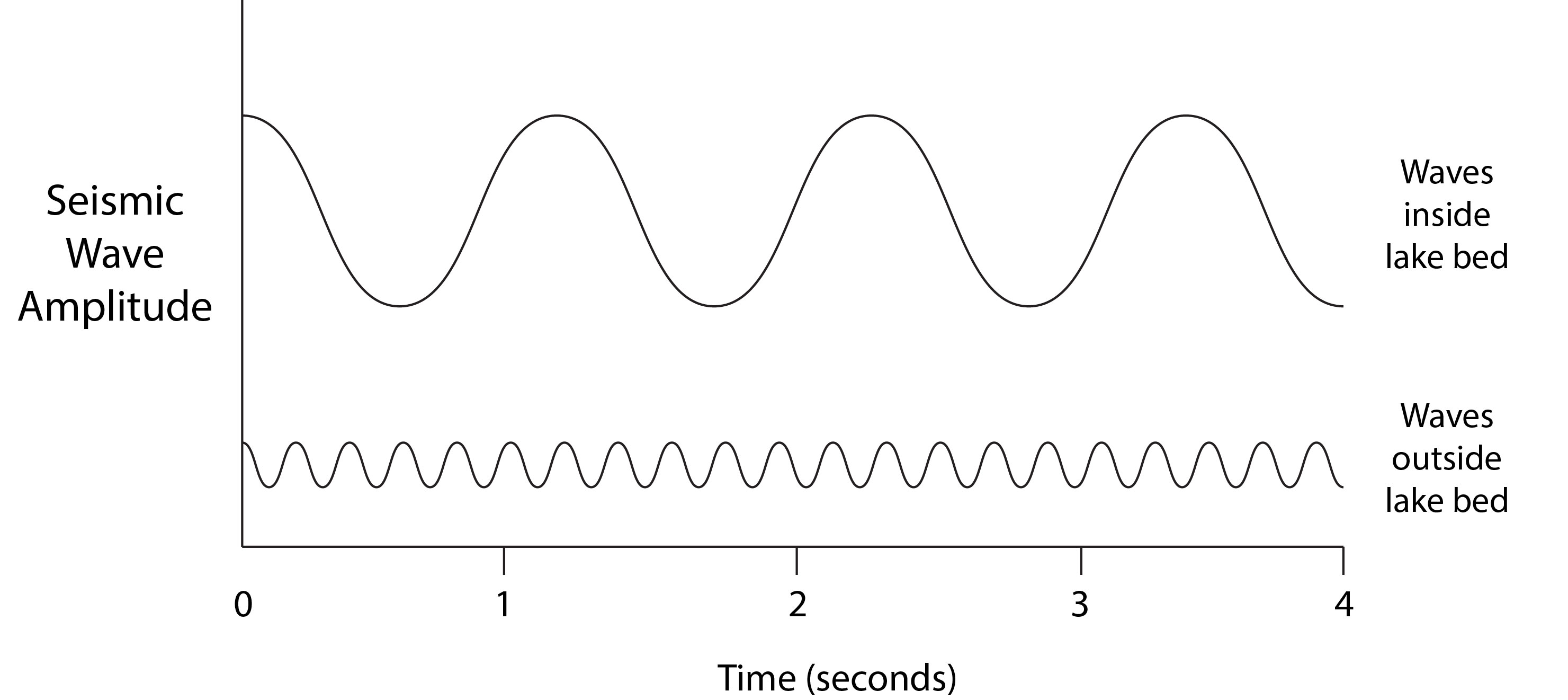By David Jacobson and Ross Stein, Temblor

What should you do in an earthquake?
Throughout the United States, we are taught to drop, cover, and hold on. Is this really your best bet for surviving an earthquake? Should you instead attempt to run out of whatever building you are in?
In the videos below from the recent M=7.1 earthquake just south of Mexico City show two buildings collapsing after the strongest shaking has past. Both buildings appear to have concrete structures, the first with an open first story, and the second with unreinforced masonry infill.
In the second of these videos, you can see the curtains swinging back and forth at a period of roughly two seconds. That means that even though none of the cars or people seem to be shaking, we think strong shaking was actually occurring. This is consistent with seismic waves recorded in central Mexico City:

These indicate that inside the lake bed, the dominant waves have a frequency of about 1.5-2 seconds, whereas outside the lake bed, the dominant frequency is about 0.25 seconds and the wave amplitude is about one-quarter the size. So, here’s how to interpret the observations we showed you above:

California’s building stock is different from Mexico City’s, but we do still have some collapse-prone structures. We asked a group of experts about the best thing to do when you feel an earthquake, and why.
Mark Benthien, the Director of Communication, Education, and Outreach at the
Southern California Earthquake Center, and the Global Coordinator of the Great ShakeOut drill said that “If someone is on higher floors, the uncertainty of total collapse and the time required to get out means getting under a sturdy table, or next to other solid objects if no shelter is available, is advised. Our urban search and rescuers who go to international earthquakes agree: They are more likely to find people alive in ‘survivable void spaces’ in collapsed buildings.” Benthien also stated, citing a Geohazards International study, that in the event that someone is on the ground flood of a building susceptible to collapse and there is ample space to move away from the building, exiting could be an option. However, he stressed that this study is “really more for very vulnerable buildings in Southern Asia (and perhaps elsewhere) where the likelihood of collapse is high.” Additionally, he stated that “this is a very complicated matter, that may not always have a one-size-fits-all solution for every possible situation.”
David Bonowitz, a Structural Engineer who chairs the the Existing Buildings Subcommittee of National Council of Structural Engineers Associastions Code Advisory Committee says that, in unreinforced masonry, the answer of what to do is simple, “Drop, Cover, Hold. Why? Because of the ways unreinforced masonry buildings break apart. In short, the brick walls peel away from the roof and floors and collapse onto the adjacent sidewalk and street. The last place you want to be in a California earthquake is just outside an unreinforced masonry building. There are rare cases of story collapse in addition to unreinforced masonry wall failure, but even in those cases running would not have been safer.”
Similarly, Jorge Crempien de la Carrera, Professor of Structural and Civil Engineering at the Catholic University of Chile, Santiago said that, “In Chile we do not have soft-storeys; they are not allowed. Also we do not have unreinforced masonry; it was banned in the late 1930’s. Since we have few collapses, we always recommend ‘drop, cover and hold on.’ We never recommend running out of the building regardless of the building type.”
Another expert, Polat Gülkan, Professor of Civil Engineering, Cankaya University, Ankara, Turkey and the former President of the International Association for Earthquake Engineering said that, “Given all of the unknowns for human reaction during ongoing ground motion, I think the advice of ‘drop, cover and hold on’ is the most recommendable—or the least bad of poor choices. I, too, have seen that video from Mexico City (first video above) with a young woman lying on her back on the ground on the street while a soft story building about 10 m away directly opposite quivered and then fell down. That gives me some unease about the wider validity of this recommendation, but trying to get out might lead to worse situations. Pan-caking buildings are usually lethal in the ground level, so in a one-story poorly built house with easy exit possibilities running outside might be wiser. But not when the building is any taller.”
Finally, Kit Miyamoto, CEO of Miyamoto International, who is currently in Mexico City working on collapsed sites, says that, “Old concrete structures are one of the most dangerous building types on earth. Their inadequate reinforcing details make the concrete very brittle under seismic motion. All damaged buildings we saw [in Mexico City after the Puebla earthquake] were this type. You know how we teach people in California to duck under a desk during an earthquake? If I’m in a nonductile concrete structure, I will run outside as fast as I can. Hundreds were saved here in Mexico City by running out of nonductile concrete structures. That’s how Mexicans are trained. That’s what I would do in these buildings. No question about it.”

So, most experts advise to ‘drop, cover, and hold on’
If there is a unanimous message, it’s that if you live or work in an unreinforced masonry or non-ductile (brittle) concrete building, get it retrofitted, or move.
We would like to hear from other experts and the public. This affects all of us.
References
Geohazards International Report – Click Here
Universidad Nacional Autónoma de México (UNAM)
- Beware quiet segments of the Philippine Fault - May 16, 2025
-
ډیری عوامل افغاني ټولنې د زلزلې پر وړاندې زیانمنوي
- August 11, 2022 - What’s happening this week in Humboldt County, California: The squeeze - February 6, 2019
